|
Books Should Be Free Loyal Books Free Public Domain Audiobooks & eBook Downloads |
|
|
Books Should Be Free Loyal Books Free Public Domain Audiobooks & eBook Downloads |
|
Art |
|---|
Book type:
Sort by:
View by:
|
By: A Highland Seer | |
|---|---|
 Tea-Cup Reading and Fortune-Telling by Tea Leaves
Tea-Cup Reading and Fortune-Telling by Tea Leaves
Reading the Cup is essentially a domestic form of Fortune-telling to be practiced at home, and with success by anyone who will take the trouble to master the simple rules laid down in these pages: and it is in the hope that it will provide a basis for much innocent and inexpensive amusement and recreation round the tea-table at home, as well as for a more serious study of an interesting subject, that this little guide-book to the science is confidently offered to the public. | |
By: Apsley Cherry-Garrard (1886-1959) | |
|---|---|
 Worst Journey in the World, Vol 1
Worst Journey in the World, Vol 1
The Worst Journey in the World is a memoir of the 1910–1913 British Antarctic Expedition led by Robert Falcon Scott. It was written and published in 1922 by a survivor of the expedition, Apsley Cherry-Garrard, and has earned wide praise for its frank treatment of the difficulties of the expedition, the causes of its disastrous outcome, and the meaning (if any) of human suffering under extreme conditions. | |
By: Ed Roberts | |
|---|---|
 Sins of Hollywood
Sins of Hollywood
Exacerbated by several high-profile Hollywood scandals, a wave of anti-Hollywood rhetoric tried to paint the movie capital as a veritable hotbed of crime, licentiousness, and moral transgression. THE SINS OF HOLLYWOOD, published in May 1922, is perhaps the most prominent anti-Hollywood polemic published during this turbulent time in film history. This anonymously-written booklet recounts in sensational, lurid detail the various high-profile scandals that precipitated the firestorm surrounding Hollywood's supposed moral turpitude... | |
By: Vincent Van Gogh (1853-1890) | |
|---|---|
 Letters of a Post-Impressionist
Letters of a Post-Impressionist
“Being the Familiar Correspondence of Vincent Van Gogh ... [Van Gogh's] art was appreciated during his life only by a very few and it is but within recent years that it has found admirers who in many cases have been most ardently enthusiastic. Of the following letters, some were addressed to his brother and the remainder to his friend E. Bernard. | |
By: Agnes Ethel Conway (1885-1950) | |
|---|---|
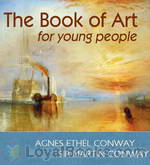 The Book of Art for Young People
The Book of Art for Young People
This is a charming book on Art History for children (and everyone else). Each chapter focuses on a great painting, reproduced in color in the original text. The authors explain the story behind the paintings, as well as the life, times, and techniques of the artists. | |
By: Albert Bigelow Paine (1861-1937) | |
|---|---|
 Life and Lillian Gish
Life and Lillian Gish
An authorized biography of Lillian Gish, the renowned silent film star known in her heyday as the First Lady of American Cinema. Albert Bigelow Paine chronicles Gish's early life, her close relationship with her sister Dorothy, her rise in film as an actor with Biograph Studios and muse of D. W. Griffith, her short time as a contract actor with MGM, and her return to the stage in the advent of the talkies. Peppered throughout with intimate and amusing anecdotes, this is a must-read for film historians, silent film enthusiasts, and admirers of one of cinema's legendary talents. | |
By: Alexander Herrmann (1844-1896) | |
|---|---|
 Herrmann's Book of Magic
Herrmann's Book of Magic
Black Art Fully Exposed. A complete and practical guide to drawing-room and stage magic for professionals and amateurs, including a complete exposure of the black art. | |
By: Amy Steedman | |
|---|---|
 Knights of Art - Stories of the Italian Painters
Knights of Art - Stories of the Italian Painters
A children's version of the Lives of Artists by Vassari with many Illustrations. Of course we won't be able to show the paintings but the descriptions and the anecdotes are interesting and may lead a child to further interest. | |
By: Anna Cora Mowatt Ritchie (1819-1870) | |
|---|---|
 Autobiography of an Actress; or Eight Years on the Stage
Autobiography of an Actress; or Eight Years on the Stage
Anna Cora Mowatt was the author of the first Broadway comedy hit written by a woman. Her 1845 play “Fashion” is still performed today. She was also the first woman to professionally perform solo public readings of literature in the U.S. In pre-Civil War America, she was a popular novelist, poet, playwright, essayist, and correspondent. Autobiography of an Actress tells the dramatic story of her life and her struggles to overcome the anti-theatrical prejudices of her day. - Summary by Kelly S. Taylor | |
By: Arthur Gray (1859-) | |
|---|---|
 Little Tea Book
Little Tea Book
After all, tea is the drink! Domestically and socially it is the beverage of the world. There may be those who will come forward with their figures to prove that other fruits of the soil—agriculturally and commercially—are more important. Perhaps they are right when quoting statistics. But what other product can compare with tea in the high regard in which it has always been held by writers whose standing in literature, and recognized good taste in other walks, cannot be questioned? (From the Preface) A Little Tea Book is a clever book about all things tea- Eastern and Western tea history, stories, culture, quotes, and even poetry. A good little read for tea lovers everywhere. | |
By: Austen Layard (1817-1894) | |
|---|---|
 Discoveries Among the Ruins of Nineveh and Babylon
Discoveries Among the Ruins of Nineveh and Babylon
Austen Henry Layard is best known as the excavator of Nimrud and of Nineveh, where he uncovered a large proportion of the Assyrian palace reliefs known, and in 1851 the library of Ashurbanipal. The Royal Library of Ashurbanipal, named after Ashurbanipal, the last great king of the Assyrian Empire, is a collection of thousands of clay tablets and fragments containing texts of all kinds from the 7th century BC. Among its holdings was the famous Epic of Gilgamesh.In this work, he describes his experiences upon his return to the region for a second expedition. - Summary by Soupy Proof-listened by Elijah Fisher and TriciaG. | |
By: B. F. Gandee | |
|---|---|
 Artist
Artist
The Artist, or Young Ladies' Instructor in Ornamental Painting, Drawing etc. is a delightful art instruction book from 1835. Follow Charlotte as she teaches her cousin Ellen a range of art forms that were widely taught at the time, from painting in the Grecian and Japanese style, to Oriental and Mezzotinting, as well as Inlaying. A few simple projects with paper are mentioned at the end of the book. - Summary by Ava Cast: Mamma read by LCaulkins Ellen read by MrsHand Charlotte read by Availle Narration and Preface and Epilogue by ToddHW | |
By: Barry Pain (1824-1928) | |
|---|---|
 If Winter Don't
If Winter Don't
Barry Pain's parody takes a sharp knife to ASM Hutchinson's best selling novel 'If Winter Comes'.We follow the professional and marital decline of long suffering (and loving it), Luke Sharper, as his marriage to Mabel flounders while his love for Jona flourishes. It could only end in tears.....Or could it? ( | |
By: Beazley | |
|---|---|
 Prince Henry the Navigator
Prince Henry the Navigator
PRINCE HENRY THE NAVIGATORBy Evelyn Abbot, M.A.INTRODUCTION.The Greek And Arabic Ideas Of The World, As The Chief Inheritance Of The Christian Middle Ages In Geographical Knowledge. Arabic science constitutes one of the main links between the older learned world of the Greeks and Latins and the Europe of Henry the Navigator and of the Renaissance. In geography it adopted in the main the results of Ptolemy and Strabo; and many of the Moslem travellers and writers gained some additional hints from Indian, Persian, and Chinese knowledge; but, however much of fact they added to Greek cartography, they did not venture to correct its postulates... | |
By: Benedetto Croce (1866-1952) | |
|---|---|
 Aesthetic as Science of Expression and General Linguistic
Aesthetic as Science of Expression and General Linguistic
One of the earliest works of this Italian philosopher and literary critic, Aesthetic as Science of Expression and General Linguistic marks the beginning of Croce's elaboration of his highly influential ideas of aesthetics. Croce defines art in terms of intuition and expression, thus replacing beauty as the primary criterion for aesthetic evaluation. | |
By: Benvenuto Cellini ((1500-1571)) | |
|---|---|
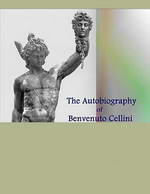 The Autobiography of Benvenuto Cellini
The Autobiography of Benvenuto Cellini
Cellini’s autobiographical memoirs, which he began writing in Florence in 1558, give a detailed account of his singular career, as well as his loves, hatreds, passions, and delights, written in an energetic, direct, and racy style. They show a great self-regard and self-assertion, sometimes running into extravagances which are impossible to credit. He even writes in a complacent way of how he contemplated his murders before carrying them out. He writes of his time in Paris: Parts of his tale recount... | |
 Treatises of Benvenuto Cellini on Goldsmithing and Sculpture
Treatises of Benvenuto Cellini on Goldsmithing and Sculpture
Benvenuto Cellini, a 16th century Florentine goldsmith and sculptor, is perhaps better known for his colorful autobiography than his works of art. In his "Trattati", Cellini explains how he made his intricate pieces in gold, such as the salt cellar intended for the table of King Francis I of France, and his monumental sculptures, including the bronze Perseus and Medusa that stands in Florence's Loggia dei Lanzi. Cellini allows himself numerous digressions, so what might in the hands of another author have proved a dry textbook is instead an amusing companion to his "Vita". - Summary by Rob Marland | |
By: Bill Nye | |
|---|---|
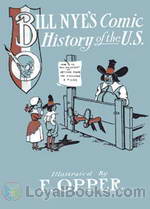 Comic History of the United States
Comic History of the United States
For American journalist and humorist Edgar Wilson Nye who wrote under the pen name Bill Nye in the late 19th century, facts are not to be presented in their newborn, bare state. They should be properly draped and embellished before they can be presented before the public. Hence, in the Comic History of the United States published in 1894, he gives his readers the facts. But in a bid to make the historical figures more human he describes them as “people who ate and possibly drank, people who were born, flourished and died, not grave tragedians posing perpetually for their photographs... | |
By: Carlton McCarthy (1847-1936) | |
|---|---|
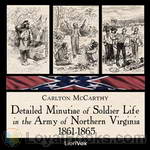 Detailed Minutiae of Soldier Life in the Army of Northern Virginia, 1861-1865
Detailed Minutiae of Soldier Life in the Army of Northern Virginia, 1861-1865
The author, who fought as a private in the Army of Northern Virginia during the Civil War, describes the Confederate soldier’s daily struggles with hunger, illness, fear, and the perils of combat; as well as his pride of service, love of comrades, and courage in the face of overwhelming odds | |
By: Carolyn Steward Taylor | |
|---|---|
 Werewolf -- Five Pieces
Werewolf -- Five Pieces
Five stories and essays about werewolves. | |
By: Cecil Henry Bompas | |
|---|---|
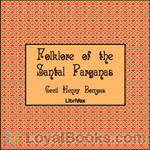 Folklore of the Santal Parganas
Folklore of the Santal Parganas
This is an intriguing collection of folklore from the Santal Parganas, a district in India located about 150 miles from Calcutta. As its Preface implies, this collection is intended to give an unadulterated view of a culture through its folklore. It contains a variety of stories about different aspects of life, including family and marriage, religion, and work. In this first volume, taken from Part I, each story is centered around a particular human character. These range from the charmingly clever (as in the character, The Oilman, in the story, “The Oilman and His Sons”) to the tragically comical (as in the character, Jhore, in the story “Bajun and Jhore”)... | |
By: Charles Alexander Eastman (1858-1939) | |
|---|---|
 Indian Child Life
Indian Child Life
The author was raised as an American Indian and describes what it was like to be an Indian boy (the first 7 chapters) and an Indian Girl (the last 7 chapters). This is very different from the slanted way the white man tried to picture them as 'savages' and 'brutes.'Quote: Dear Children:—You will like to know that the man who wrote these true stories is himself one of the people he describes so pleasantly and so lovingly for you. He hopes that when you have finished this book, the Indians will seem to you very real and very friendly... | |
By: Charles Dickens (1812-1870) | |
|---|---|
 Charles Dickens 200th Anniversary Collection Vol. 1
Charles Dickens 200th Anniversary Collection Vol. 1
The Charles Dickens 200th Anniversary Collection comprises short works - fiction, essays, poetry, letters, magazine articles and speeches - and each volume will be a pot pourri of all genres and periods of his writing. This first volume is released on Dickens' 200th birthday, February 7th 2012. Further volumes will follow during the anniversary year.Volume 1 includes short stories including, amongst others, The Holly Tree, the first part of Holiday Romance and three pieces from Mugby Junction.Some... | |
By: Charles Morris (1833-1922) | |
|---|---|
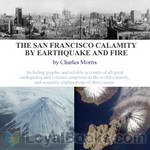 The San Francisco Calamity by Earthquake and Fire
The San Francisco Calamity by Earthquake and Fire
The first half of this book describes the devastating earthquake that hit San Francisco in 1906, and the subsequent destruction caused by fire. Various eyewitnesses and victims give their account on the tragedy. In the second half, a number of different other earthquakes and volcanic eruptions are retold, like the eruption of the Vesuvius that destroyed Pompeij or the explosion of the Krakatoa, together with scientific explanations for the causes of earthquakes and the eruption of volcanos. | |
By: Clayton Hamilton (1881-1946) | |
|---|---|
 Studies in Stagecraft
Studies in Stagecraft
A companion piece to Hamilton's earlier work, The Theory of the Theatre. Where that volume dealt with the criticism of dramatic art in general, this volume focuses more specifically on the contemporary drama of the era in which it was written. - Summary by Andrew Gaunce | |
 Problems of the Playwright
Problems of the Playwright
A third volume of essays by American critic Clayton Hamilton, published as a companion piece to The Theory of the Theatre & Studies in Stagecraft, and focusing on the problems of the playwright. | |
By: Clement | |
|---|---|
 Women in the fine arts
Women in the fine arts
WOMEN IN THE FINE ARTS FROM THE SEVENTH CENTURY B. C.TO THE TWENTIETH CENTURY A. D.BY CLARA ERSKINE CLEMENT PREFATORY NOTE As a means of collecting material for this book I have sent to many artists in Great Britain and in various countries of Europe, as well as in the United States, a circular, asking where their studies were made, what honors they have received, the titles of their principal works, etc. I take this opportunity to thank those who have cordially replied to my questions, many of whom... | |
By: Cornelia Mee | |
|---|---|
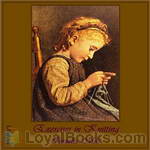 Exercises in Knitting
Exercises in Knitting
Mrs. Mee, her husband, and her sister ran a yarn and needlework import/warehouse business in Bath, England. Her books primarily contain practical everyday items that knit up quickly with the busy homemaker in mind. At this time, published knitting “receipts” did not contain abbreviations and were laborious to use. They were, however, rich in error! Later in her career, due to circumstances of war and the resulting social stress and poverty, many of her knitting books were printed for ladies’ charitable societies, which used her knitting “receipts” to clothe the poor mill workers who were out of work due to the American Civil War and the embargo of cotton. | |
By: Dave Stanley | |
|---|---|
 There's Laughter in the Air! Radio's Top Comedians and Their Best Shows
There's Laughter in the Air! Radio's Top Comedians and Their Best Shows
There's Laughter in the Air takes readers on a sidesplitting romp through the world of old-time radio comedy. It gives a brief history of the medium and brief but intimate accounts of some of the biggest acts from the 1930s and 1940s. Gaver and Stanley give insight on several luminaries from the days of vintage radio: Jack Benny, Fred Allen, Fibber McGee and Molly, Burns and Allen, Amos 'n Andy, and more! | |
By: Dudley Landon Vaill (1873-?) | |
|---|---|
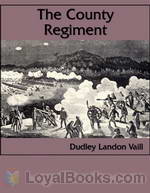 The County Regiment
The County Regiment
A sketch of the second regiment of Connecticut volunteer heavy artillery, originally the Nineteenth Volunteer Infantry, in the Civil War. | |
By: Edgar James Banks (1866-1945) | |
|---|---|
 Seven Wonders of the Ancient World
Seven Wonders of the Ancient World
The 7 Wonders of the Ancient World is a list of masterpieces of architecture and art of classical antiquity. First compiled in the second century BC, it served as a guidebook for the interested Hellenic traveller. This small book gives an introduction to all the entries on the list: The Pyramid of Khufu, the Walls of Babylon, the Satue of the Olympian Zeus, the Temple of Diana , the Tomb of King Mausolus, the Colossus of Rhodes, and the Pharos of Alexandria. Sadly for the modern tourist, all but the Pyramid of Giza have been destroyed centuries ago. | |
By: Edgar Rice Burroughs (1875-1950) | |
|---|---|
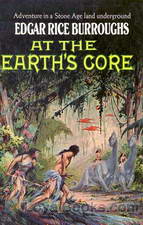 At the Earth's Core
At the Earth's Core
This is the first book in the Pellucidar series. Pellucidar is a fictional Hollow Earth milieu invented by Edgar Rice Burroughs for a series of action adventure stories. The stories initially involve the adventures of mining heir David Innes and his inventor friend Abner Perry after they use an “iron mole” to burrow 500 miles into the earth’s crust. (adapted from Wikipedia) | |
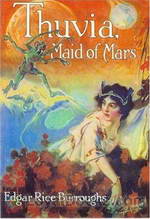 Thuvia, Maid of Mars
Thuvia, Maid of Mars
Published in 1920, Thuvia, Maid of Mars is the fourth book in the Barsoom series and concentrates on Carthoris, the son of infamous John Carter, and Thuvia, the princess of Ptarth, as they find themselves entangled in a complex web of love and strict traditions of Barsoom. A typical Burroughs piece, the installment contains all the required elements of an effective pulp fiction, including a hero, a damsel in distress, unforeseen complications, and a generous supply of action. Welcoming a new... | |
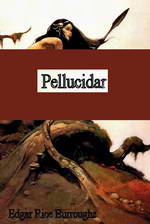 Pellucidar
Pellucidar
Pellucidar is a fictional “Hollow Earth” milieu invented by Edgar Rice Burroughs for a series of action adventure stories. The stories initially involve the adventures of mining heir David Innes and his inventor friend Abner Perry after they use an “iron mole” to burrow 500 miles into the earth’s crust. This is the second book in the series. | |
By: Edward Armitage (1817-1896) | |
|---|---|
 Lectures On Painting Delivered To The Students Of The Royal Academy
Lectures On Painting Delivered To The Students Of The Royal Academy
This 1883 book contains chapters on ancient costumes, Byzantine and Romanesque art, David and his school, modern schools of Europe, drawing, color, decorative painting, finish, choice of subject, composition of decorative and historical pictures, and composition of incident pictures. Edward Armitage RA was an English painter of the Victorian era whose work focused on historical, classical and biblical subjects. He was Professor and Lecturer on painting in the Royal Academy 1875-1886. | |
By: Edward R. Shaw (1855-1903) | |
|---|---|
 Discoverers and Explorers
Discoverers and Explorers
Tales of the brave and daring explorers that ventured into the unknown “Sea of Darkness” where it was thought monsters and angry gods lived. They dared to sail near the equator which was thought to have such intense heat that it would boil the ocean water. It was also commonly thought at the time that the world was flat, and the ships would fall off the face of the earth. These men overcame these fears to explore and discover new lands. | |
By: Edward Weitzel (1861-?) | |
|---|---|
 Intimate Talks with Movie Stars
Intimate Talks with Movie Stars
A collection of interviews originally published in Moving Picture World that aims to give the movie-mad public "intimate pen pictures of the stars of the screen." Weitzel interviews some of the most renowned film stars of the 1920s: Mary Pickford, Douglas Fairbanks, Lillian and Dorothy Gish, Gloria Swanson, Pearl White, and more! | |
By: Ellen Churchill Semple | |
|---|---|
 Influences of Geographic Environment
Influences of Geographic Environment
INFLUENCES OF GEOGRAPHIC ENVIRONMENT ON THE BASIS OF RATZEL'S SYSTEM OF ANTHROPO-GEOGRAPHY BY ELLEN CHURCHILL SEMPLE PREFACE The present book, as originally planned over seven years ago, was to be a simplified paraphrase or restatement of the principles embodied in Friedrich Ratzel's _Anthropo-Geographie_. The German work is difficult reading even for Germans. To most English and American students of geographic environment it is a closed book, a treasure-house bolted and barred. Ratzel himself realized that any English form could not be a literal translation, but must be adapted to the Anglo-Celtic and especially to the Anglo-American mind... | |
By: Elsie Spicer Eells | |
|---|---|
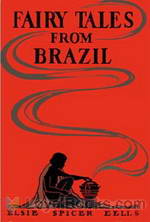 Fairy Tales from Brazil
Fairy Tales from Brazil
This book, subtitled "How and Why Tales from Brazilian Folk-Lore", is a collection of short stories, most of them etiologial myths from Brazilian Indian Folklore. | |
By: Emily Burbank (?-?) | |
|---|---|
 Woman as Decoration
Woman as Decoration
A guide for women to complement their dress to their surroundings, be it in their own home, on outings or on stage. Please note that there is a separate chapter with the captions of the fashion plates which can be found in the online text. | |
By: Ernest Shackleton | |
|---|---|
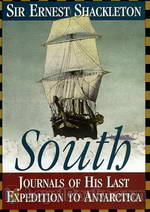 South! The Story of Shackleton's Last Expedition 1914-1917
South! The Story of Shackleton's Last Expedition 1914-1917
The expedition was given the grand title of The Imperial Trans-Antarctic Expedition. Due to be launched in 1914, two ships were to be employed. The first, the lead vessel, fittingly named the Endurance was to transport the team to the Weddell Sea from where the great explorer Ernest Shackleton and five others would cross the icy wastes of Antarctica on foot. The second ship, the Aurora was to approach the continent from the other side and put down supplies at various points to help the explorers... | |
By: Estelle M. Hurll (1863-1924) | |
|---|---|
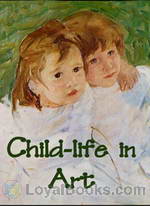 Child-life in Art
Child-life in Art
The poetry of childhood is full of attractiveness to the artist, and many and varied are the forms in which he interprets it. The Christ-child has been his highest ideal. All that human imagination could conceive of innocence and purity and divine loveliness has been shown forth in the delineation of the Babe of Bethlehem. The influence of such art has made itself felt upon all child pictures. It matters not whether the subject be a prince or a street-waif; the true artist sees in him something which is lovable and winning, and transfers it to his canvas for our lasting pleasure. | |
By: Ethel Brilliana Tweedie (1862-1940) | |
|---|---|
 Behind the Footlights
Behind the Footlights
In this collection of essays the author gives us an opportunity to peek into the mysterious life of the theatre; she recalls her numerous conversations with and anecdotes about the "stage folk", such as actors, actresses, playwrights, stage directors or managers. However, her portrayal of theatrical life doesn't aim at glamorising the profession and the day-to-day life of those connected with the stage. On the contrary, if there's one overarching theme to her stories it is the repeated assurance that it's a hard and precarious existence, even for those at the top of the profession, let alone those who play minor parts and are rarely mentioned. | |
By: Eva March Tappan (1854-1930) | |
|---|---|
 World’s Story Volume V: Italy, France, Spain and Portugal
World’s Story Volume V: Italy, France, Spain and Portugal
This is the fifth volume of the 15-volume series of The World’s Story: a history of the World in story, song and art, edited by Eva March Tappan. Each book is a compilation of selections from prose literature, poetry and pictures and offers a comprehensive presentation of the world's history, art and culture, from the early times till the beginning of the 20th century. Topics in Part V include Italian painters and poets, the French Revolution, the Spanish Inquisition and Portuguese explorers. - Summary by Sonia Cast list for A supposed street scene in Verona in the fourteenth century: Gregory: Nemo / Sampson: Tomas Peter / Abraham: Monika M... | |
By: Fanny Dickerson Bergen (1846-1924) | |
|---|---|
 Current Superstitions
Current Superstitions
No matter how enlightened, chances are you’ve been raised around superstitious lore of one kind or another. Fanny Dickerson Bergen was one of the original researchers of North American oral traditions relating to such key life events and experiences as babyhood and childhood, marriage, wishes and dreams, luck, warts and cures, death omens and mortuary customs, and “such truck,” as Huck Finn would say. You’ll be surprised at how many of these old saws you’ll know. Here’s a quote from... | |
By: Ferdinand de Lesseps (1805-1894) | |
|---|---|
 History of the Suez Canal
History of the Suez Canal
A lively picture of the origin and completion of the Suez Canal and his architect, Vicomte de Lesseps. This is the translation of a lecture given before the Societe de Gens Lettres in Paris, in April 1870 by de Lesseps himself. | |
By: François Crastre | |
|---|---|
 Rosa Bonheur
Rosa Bonheur
A Masterpieces in Colour series book. Very informative with a biography and critique of the artist's work and how well she was beloved. | |
By: Frank Berkeley Smith (1869-1931) | |
|---|---|
 Real Latin Quarter
Real Latin Quarter
"Cocher, drive to the rue Falguière"--this in my best restaurant French. The man with the varnished hat shrugged his shoulders, and raised his eyebrows in doubt. He evidently had never heard of the rue Falguière. "Yes, rue Falguière, the old rue des Fourneaux," I continued. Cabby's face broke out into a smile. "Ah, oui, oui, le Quartier Latin." And it was at the end of this crooked street, through a lane that led into a half court flanked by a row of studio buildings, and up one pair of dingy waxed steps, that I found a door bearing the name of the author of the following pages--his visiting card impaled on a tack... | |
By: Frederic Maccabe | |
|---|---|
 Maccabe's Art of Ventriloquism and Vocal Illusions
Maccabe's Art of Ventriloquism and Vocal Illusions
This manual offers instructions on how to become a ventriloquist. Starting out from a general introduction of ventriloquism, it explains how sounds are formed in the human body and how the voice is used. It then provides exercises for the budding artist, and a number of dialogues for performances. | |
By: Frederick Litchfield | |
|---|---|
 Illustrated History of Furniture
Illustrated History of Furniture
From the Earliest to the Present TimeBy Frederick Litchfield.PREFACE.In the following pages the Author has placed before the reader an account of the changes in the design of Decorative Furniture and Woodwork, from the earliest period of which we have any reliable or certain record until the present time. A careful selection of illustrations has been made from examples of established authenticity, the majority of which are to be seen, either in the Museums to which reference is made, or by permission of the owners; and the representations of the different interiors will convey an idea of the character and disposition of the furniture of the periods to which they refer... | |
By: Frederick Wedmore (1844-1921) | |
|---|---|
 Four Masters of Etching
Four Masters of Etching
Frederick Wedmore presents short vignettes of influential artists of the 19th century who were noted for their mastery of etching: Seymour Haden, Jules Jacquemart, J. A. M. Whistler, and Alphonse Legros. - Summary by Larry Wilson | |
By: Friedrich Kerst | |
|---|---|
 Mozart, The Man and the Artist as Revealed in His Own Words
Mozart, The Man and the Artist as Revealed in His Own Words
Wolfgang Amadeus Mozart. His name is one of the most recognizable names in history and one of the most enduring of composers. At age 5, this “wunderkinder” took to the stage and began his life as a prolific and celebrated creator-genius of such luminous works the world has not known since. This collection of morsels taken from his personal letters is engaging and gives a look into the mind of the boy wonder. Was he mad? Was he miraculous? | |
By: Friedrich Nietzsche (1844-1900) | |
|---|---|
 Birth of Tragedy
Birth of Tragedy
In this famous early work of German philosopher Friedrich Nietzsche, he investigates the artistic characteristics of Apollonian and Dionysian characteristics in Greek art, specifically in Greek tragedy as it evolved. Then he applies his conclusions about Greek tragedy to the state of modern art, especially modern German art and specifically to the operas of Richard Wagner. | |
By: G. F. Young (1846-1919) | |
|---|---|
 Medici, Volume 1
Medici, Volume 1
This work relates the history of the Medici family through three centuries and eleven generations, from its rise from obscurity, to its zenith of power and influence, to its eventual decay and ruin. It outlines their history in conjunction with the major events of Europe and dwells much on the artists and artworks patronized by the Medici - the impetus of the Renaissance. This first volume brings to life the Renaissance and how Florence, through the Medici, was the epicentre of the movement that spread new learning throughout Europe... | |
By: Garrett P. Serviss (1851-1929) | |
|---|---|
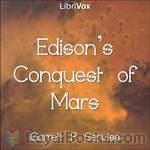 Edison's Conquest of Mars
Edison's Conquest of Mars
Edison’s Conquest of Mars, by Garrett P. Serviss, is one of the many science fiction novels published in the nineteenth century. Although science fiction was not at the time thought of as a distinct literary genre, it was a very popular literary form, with almost every fiction magazine regularly publishing science fiction stories and novels. “Edison’s Conquest of Mars” was published in 1898 as an unauthorized sequel to H. G. Wells’s The War of the Worlds, but did not achieve the fame of its predecessor. The book was endorsed by Thomas Edison, the hero of the book — though not by Wells. | |
By: Gaston Maspero (1846-1916) | |
|---|---|
 Manual of Egyptian Archaeology and Guide to the Study of Antiquities in Egypt
Manual of Egyptian Archaeology and Guide to the Study of Antiquities in Egypt
A handbook of Egyptian archaeology, issued by the British Museum, considered suitable for British tourists travelling to Egypt in the 19th Century. (Introduction by Timothy Ferguson) | |
By: George Hamilton | |
|---|---|
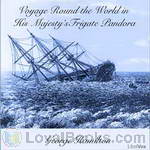 Voyage Round the World in His Majesty's Frigate Pandora
Voyage Round the World in His Majesty's Frigate Pandora
George Hamilton was the surgeon assigned to the frigate Pandora. The British Admiralty ordered the ship to the Pacific to arrest the Bounty mutineers and bring them back to England for trial. The commander, Captain Edward Edwards, also was ordered to chart the passage between Australia and New Guinea. While Edwards managed to arrest the mutineers still on Tahiti, he sank the Pandora on a reef near Australia. Hamilton tells this story and also the story of the crew’s fate after the Pandora sank. | |
By: George L. Apperson (1857-1937) | |
|---|---|
 The Social History of Smoking
The Social History of Smoking
This work tells the history of smoking in England from the social point of view. Thus it does not deal with the history of tobacco growing or tobacco related manufacture, but is rather the story of how smoking has fitted in with the fashions and customs throughout the ages, and the changes in the attitude of society towards smoking. | |
By: Gilbert Seldes (1893-1970) | |
|---|---|
 Seven Lively Arts
Seven Lively Arts
“... But, beside those great men, there is a certain number of artists who have a distinct faculty of their own by which they convey to us a peculiar quality of pleasure which we cannot get elsewhere; and these, too, have their place in general culture, and must be interpreted to it by those who have felt their charm strongly, and are often the objects of a special diligence and a consideration wholly affectionate, just because there is not about them the stress of a great name and authority.” - Summary by Walter Pater | |
By: Giorgio Vasari (1511-1574) | |
|---|---|
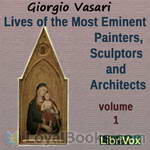 Lives of the Most Eminent Painters, Sculptors and Architects
Lives of the Most Eminent Painters, Sculptors and Architects
The Lives of the Most Excellent Italian Painters, Sculptors, and Architects, from Cimabue to Our Times, or Le Vite delle più eccellenti pittori, scultori, ed architettori, as it was originally known in Italian, is a series of artist biographies written by 16th century Italian painter and architect Giorgio Vasari, which is considered "perhaps the most famous, and even today the most- read work of the older literature of art", "some of the Italian Renaissance's most influential writing on art", and "one of the founding texts in art history"... | |
By: Goldsworthy Lowes Dickinson (1862-1932) | |
|---|---|
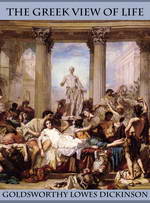 The Greek View of Life
The Greek View of Life
“With the Greek civilisation beauty perished from the world. Never again has it been possible for man to believe that harmony is in fact the truth of all existence.”This elegantly-written work provides a splendid introduction to the Greeks of the classic period: how they thought, wrote, and organised their lives and loves. Although it dates from the 1890s, there is very little about it that has dated. To its author’s credit, the subject of “Greek love” is dealt with in a sane and factual context - despite the judicial assassination of Oscar Wilde going on in the background... | |
By: H. G. Wells (1866-1946) | |
|---|---|
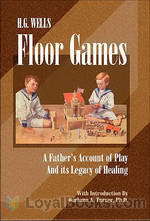 Floor Games
Floor Games
H.G. Wells had so much fun playing with his children on the floor of their playroom, he decided to write a jovial little book to inspire other parents in their pursuit of quality time with the kids. While the raw materials available from hobby stores of his day were woefully short of the variety and quality of what can be bought easily now, he and his sons created their own worlds to rule. This short work describes two games of imagination played out upon the floor of his home – an archipelago of islands, and a thoroughly integrated city, conveniently organized with two mayoral positions for his sons “G... | |
By: Hamilton Fyfe (1869-1951) | |
|---|---|
 Arthur Wing Pinero, Playwright - A Study
Arthur Wing Pinero, Playwright - A Study
A discussion about the life and works of the playwright Arthur Wing Pinero. The perfect accompaniment to the plays by Pinero available here at. - Summary by ToddHW | |
By: Harold Speed | |
|---|---|
 The Practice and Science of Drawing
The Practice and Science of Drawing
THE PRACTICE & SCIENCE OF DRAWINGBY HAROLD SPEEDPREFACEPermit me in the first place to anticipate the disappointment of any student who opens this book with the idea of finding wrinkles on how to draw faces, trees, clouds, or what not, short cuts to excellence in drawing, or any of the tricks so popular with the drawing masters of our grandmothers and still dearly loved by a large number of people. No good can come of such methods, for there are no short cuts to excellence. But help of a very practical kind it is the aim of the following pages to give; although it may be necessary to make a greater call upon the intelligence of the student than these Victorian methods attempted... | |
By: Harry Alan Potamkin (1900-1933) | |
|---|---|
 Eyes of the Movie
Eyes of the Movie
"The movie was born in the laboratory and reared in the counting-house. It is a benevolent monster of four I's: Inventor, Investor, Impresario, Imperialist." So begins Harry Alan Potamkin's The Eyes of the Movie, a posthumously published indictment of Hollywood. It is a savage socialist critique of the film industry, its practices, and products. Potamkin takes aim at the "conservative element" infiltrating Hollywood's dream factory, investigating mainstream cinema's double function as propaganda and "passing amusement." | |
By: Harry Houdini | |
|---|---|
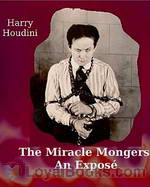 The Miracle Mongers, an Exposé,
The Miracle Mongers, an Exposé,
“A complete exposé of the modus operandi of fire eaters, heat resisters, poison eaters, venomous reptile defiers, sword swallowers, human ostriches, strong men, etc.”, [by Harry Houdini, from the subtitle]. | |
By: Helen Marshall Pratt | |
|---|---|
 Understanding English Cathedrals: Terminology, Architecture, Organization, And Personnel
Understanding English Cathedrals: Terminology, Architecture, Organization, And Personnel
This recording comprises chapters from two different works: How To Visit The English Cathedrals by Esther Singleton, and The Cathedral Churches Of England by Helen Marshall Pratt. Each book devotes a chapter to each cathedral, but this recording includes only the introductory chapters of general information. - Summary by David Wales | |
By: Henry James (1843-1916) | |
|---|---|
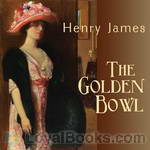 The Golden Bowl
The Golden Bowl
The Golden Bowl is a 1904 novel by Henry James. Set in England, this complex, intense study of marriage and adultery completes what some critics have called the “major phase” of James’ career. The Golden Bowl explores the tangle of interrelationships between a father and daughter and their respective spouses. The novel focuses deeply and almost exclusively on the consciousness of the central characters, with sometimes obsessive detail but also with powerful insight. | |
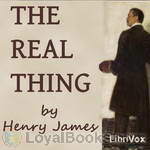 The Real Thing
The Real Thing
The Real Thing is, on one level, a somewhat ironic tale of an artist and two rather particular models. Yet it also raises questions about the relationship between the notion of reality in our humdrum world, and the means that an artist must use in trying to achieve, or reflect, that reality. Though the protagonist is an artist and illustrator of books, not a writer, it's not hard to imagine that James has himself, and other writers, in mind. | |
By: Hugh Robert Watkin (1868-1937) | |
|---|---|
 Short Description of Torre Abbey
Short Description of Torre Abbey
Following the Dissolution of the Monasteries in the time of Henry VIII, a significant part of the buildings of Torre Abbey, particularly the church area, lay in ruins. Then, during the 17th century and subsequently, surviving parts of the abbey were incorporated into the creation of a grand private residence, the owner of which in the early part of the 20th century was Colonel Lucius Cary. With the permission of the colonel, Hugh Watkin, who at that time was living in the Chelston district of Torquay, fairly close to the abbey, undertook certain excavations of the remaining ruins between the years of 1906 and 1911... | |
By: Ignatius Loyola Donnelly (1831-1901) | |
|---|---|
 Atlantis: The Antediluvian World
Atlantis: The Antediluvian World
"Atlantis: The Antediluvian World is a book published during 1882 by Minnesota populist politician Ignatius L. Donnelly, who was born in Philadelphia, Pennsylvania during 1831. Donnelly considered Plato's account of Atlantis as largely factual and attempted to establish that all known ancient civilizations were descended from this supposed lost land. Many of its theories are the source of many modern-day concepts we have about Atlantis, like the civilization and technology beyond its time, the origins of all present races and civilizations, a civil war between good and evil, etc." | |
By: Irving Pichel (1891-1954) | |
|---|---|
 On Building a Theatre
On Building a Theatre
As people live in a house, Or work, day after day, in a store or factory or public building, they become used to inconveniences, bad arrangement, and lack of proper facilities. They complain for a time, perhaps, and then forget. And after a while, when the house has become home, or the large building has gathered tradition, a sort of admiration settles upon it. What is really plain ugly or wrong or bad appears quaint and full of "atmosphere." And is imitated. Style and tradition embalm the very features that make the building a bad building... | |
By: James Joyce (1882-1941) | |
|---|---|
 Ulysses
Ulysses
Banned in the United States and United Kingdom throughout the 1920s, Ulysses turned conventional ideas of the novel inside out with its bold new form, style and theme. Deeply rooted in the Greek myth of the hero of the Trojan War, Joyce bases his novel on Ulysses or Odysseus, who is doomed to voyage for ten years before returning home to Ithaca. Joyce had been deeply influenced by the Iliad and the Odyssey, which he had read from Charles Lamb's adaptations as a child. In fact, he considered him the epitome of the heroic ideal and constantly thought of giving the myth a new dimension in modern literature... | |
By: James T. Nichols (1865-?) | |
|---|---|
 Birdseye Views of Far Lands
Birdseye Views of Far Lands
Birdseye Views of Far Lands is an interesting, wholesome presentation of something that a keen-eyed, alert traveler with the faculty of making contrasts with all classes of people in all sorts of places, in such a sympathetic way as to win their esteem and confidence, has been able to pick up as he has roamed over the face of the earth for a quarter of a century.The book is not a geography, a history, a treatise on sociology or political economy. It is a Human Interest book which appeals to the reader who would like to go as the writer has gone and to see as the writer has seen the conformations of surface, the phenomena of nature and the human group that make up what we call a "world... | |
By: Jane Eayre Fryer | |
|---|---|
 Mary Frances Knitting and Crocheting Book
Mary Frances Knitting and Crocheting Book
Mary Frances is a little girl whose Aunt Maria intends to teach her to knit and crochet, but she's very strict and demanding. It's a good thing the Knitting People are around to help Mary Frances out! This book includes real patterns which can be knit and crocheted for dolls and children. | |
By: Jennie Ellis Keysor | |
|---|---|
 Great Artists
Great Artists
Biographies of Raphael Santi, Murillo, Peter Paul Rubens, and Albrecht Durer. This is a wonderful tool for art study as there are references for further study, as well as ideas for language arts to incorporate into the study. | |
By: Johan Huizinga (1872-1945) | |
|---|---|
 waning of the middle ages: a study of the forms of life, thought and art in France and the Netherlands in the XIVth and XVth centuries
waning of the middle ages: a study of the forms of life, thought and art in France and the Netherlands in the XIVth and XVth centuries
The Waning of the Middle Ages , subtitled A study of the forms of life, thought and art in France and the Netherlands in the fourteenth and fifteenth centuries, is Johan Huizinga's most famous work. It was published in 1919 as Herfsttij der Middeleeuwen and first translated into English in 1924. Huizinga defends the idea that the exaggerated formality and romanticism of late medieval court society was a defense mechanism against the constantly increasing violence and brutality of life. The break off between Middle Ages and Renaissance was, according to him, a period of pessimism, cultural exhaustion, and nostalgia... | |
By: Johann Wolfgang von Goethe (1749-1832) | |
|---|---|
 Theory of Colours
Theory of Colours
Newton's observations on the optical spectrum were widely accepted but Goethe noticed the difference between the scientific explanation and the phenomena as experienced by the human eye. He did not try to explain this, but rather collected and presented data, conducting experiments on the interplay of light and dark. His work was rejected as 'unscientific' by physicists but his color wheel is still used by artists today. - Summary by Lynne Thompson | |
 Essays on Art
Essays on Art
Essays on art, letters, thoughts, aphorisms - Goethe's thoughts were dealing with artworks of every branch of arts. He addressed many aspects of the artistic process and described his impressions of works of arts - and even dilettantism - in his essays. Being one of the great masters of german written arts, Goethe used his own skills to express his thoughts: while Section 25 is more of a commented list of pictures in a gallery, two other sections are dramatic readings. Furthermore there are letters, talks and thoughts to entertain - I hope, these essays may function as a worthy treasure-chest for the interested... | |
By: John Charles Van Dyke | |
|---|---|
 A Text-Book of the History of Painting
A Text-Book of the History of Painting
A TEXT-BOOK OF THE HISTORY OF PAINTINGBY JOHN C. VAN DYKE, L.H.D.PREFACE.The object of this series of text-books is to provide concise teachable histories of art for class-room use in schools and colleges. The limited time given to the study of art in the average educational institution has not only dictated the condensed style of the volumes, but has limited their scope of matter to the general features of art history. Archaeological discussions on special subjects and aesthetic theories have been avoided... | |
By: John Kendrick Bangs (1862-1922) | |
|---|---|
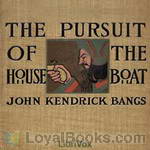 The Pursuit of the House-Boat
The Pursuit of the House-Boat
This sequel to Bangs' A House-Boat on the Styx continues the "thought-experiment" of bringing various historical and fictional figures together, detailing the adventures of the ladies of Hades after they are kidnapped by pirates and the attempts of the Associated Shades (led by Sherlock Holmes) to retrieve their house-boat. (Introduction by Emma Joyce) | |
 R. Holmes and Co.
R. Holmes and Co.
Raffles Holmes is introduced in these stories as the son of the great Sherlock Holmes. He is also revealed to be the grandson of A.J. Raffles, a gentleman thief pursued by Sherlock Holmes many years earlier. This apparently contradictory family background sets the stage for his colorful and amusing adventures. | |
By: John Lloyd Stephens (1805-1852) | |
|---|---|
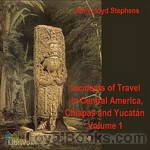 Incidents of Travel in Central America, Chiapas, and Yucatan, Vol. 1
Incidents of Travel in Central America, Chiapas, and Yucatan, Vol. 1
The year is 1838. The scene is the dense Honduran forest along the Copán River. Two men, John Lloyd Stephens and Frederick Catherwood, are about to rediscover Mayan civilization. Their guide, slashing through the rampant growth with his machete, leads them to a structure with steps up the side, shaped like a pyramid. Next they see a stone column, fourteen feet high, sculptured on the front with a portrait of a man, “solemn, stern and well fitted to excite terror,” covered on the sides with hieroglyphics, and with workmanship “equal to the finest monuments of the Egyptians... | |
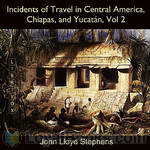 Incidents of Travel in Central America, Chiapas, and Yucatán, Vol. 2
Incidents of Travel in Central America, Chiapas, and Yucatán, Vol. 2
The year is 1838. The scene is the dense Honduran forest along the Copán River. Two men, John Lloyd Stephens and Frederick Catherwood, are about to rediscover Mayan civilization. Their guide, slashing through the rampant growth with his machete, leads them to a stone column, fourteen feet high, sculptured on the front with a portrait of a man, “solemn, stern and well fitted to excite terror,” covered on the sides with hieroglyphics, and with workmanship “equal to the finest monuments of the Egyptians... | |
By: John M. Burke (1842-1917) | |
|---|---|
 Buffalo Bill from Prairie to Palace
Buffalo Bill from Prairie to Palace
William Frederick "Buffalo Bill" Cody is one of the legends of the American western frontier. As a teen he rode for the pony expressed and then drove for the Union Army during the U.S. Civil War. He later rejoined the army as a scout and was awarded the medal of honor for his valor during the Indian Wars. His fame became worldwide, however, through his flamboyant Wild West shows which toured not only across the American West but through England and Europe. John M. Burke served as Cody’s publicist and promoter for the Wild West shows, propelling him into celebrity status... | |
By: John Poole Sandlands (1838-1915) | |
|---|---|
 Voice and Public Speaking
Voice and Public Speaking
I write for public speakers. I wish to take them into my confidence. I feel I can do them good. My object is to help them to speak with greater ease and efficiency. When the voice is developed and in a condition to answer the calls made upon it, then it will naturally seek to put its powers into operation.... Develop the powers of the voice and it will not be satisfied till it find scope for their exercise. This is a marvellous feature of the human voice, and yet, perhaps, it is more or less common to all the powers we possess... | |
By: John Ruskin (1819-1900) | |
|---|---|
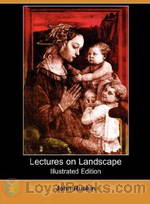 Lectures on Landscape
Lectures on Landscape
A series of lectures on landscape painting delivered at Oxford in 1871, by artist, critic, and social commentator, John Ruskin. | |
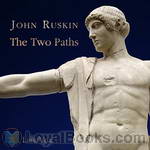 The Two Paths
The Two Paths
"The Two Paths" is a collection of five lectures delivered in 1858 and 1859 by John Ruskin on art and architecture. This is how the author himself presents the book: "The following addresses, though spoken at different times, are intentionally connected in subject; their aim being to set one or two main principles of art in simple light before the general student, and to indicate their practical bearing on modern design. The law which it has been my effort chiefly to illustrate is the dependence of all noble design, in any kind, on the sculpture or painting of Organic Form." The most famous of these, the fifth lecture, is commonly known simply as "The Work of Iron" | |
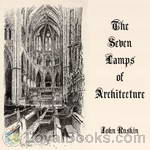 The Seven Lamps of Architecture
The Seven Lamps of Architecture
The Seven Lamps of Architecture, published in May 1849, is an extended essay written by the English art critic and theorist John Ruskin. The 'lamps' of the title are Ruskin's principles of architecture, which he later enlarged upon in the three-volume The Stones of Venice. To an extent, they codified some of the contemporary thinking behind the Gothic Revival. At the time of its publication A.W.N. Pugin and others had already advanced the ideas of the Revival and it was well under way in practice... | |
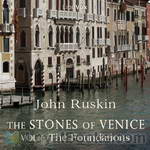 The Stones of Venice, volume 1
The Stones of Venice, volume 1
The Stones of Venice is a three-volume treatise on Venetian art and architecture by English art historian John Ruskin, first published from 1851 to 1853. Intending to prove how the architecture in Venice exemplified the principles he discussed in his earlier work, The Seven Lamps of Architecture, Ruskin examined the city in detail, describing for example over eighty churches. He discusses architecture of Venice's Byzantine, Gothic and Renaissance periods, and provides a general history of the city as well... | |
By: Joseph Jacobs (1854-1916) | |
|---|---|
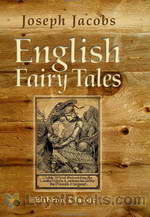 English Fairy Tales
English Fairy Tales
Jack the Giant-Killer, Tom Thumb, Goldilocks and The Three Bears, Henny Penny, Dick Whittington, The Three Little Pigs, Red Riding Hood and a host of immortal characters are found in this delightful collection of English Fairy Tales by Joseph Jacobs. The book made its first appearance in 1890 and has remained a firm favorite with both young and old ever since. Fairy tales have traditionally emanated from France and Germany. The famous compilations by La Fontaine and the Brothers Grimm have overshadowed children's literature for centuries... | |
By: Joseph Lewis French (1858-1936) | |
|---|---|
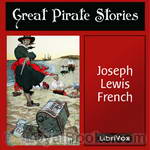 Great Pirate Stories
Great Pirate Stories
Piracy embodies the romance of the sea at its highest expression. It is a sad but inevitable commentary on our civilization, that, so far as the sea is concerned, it has developed from its infancy down to a century or so ago, under one phase or another of piracy. If men were savages on land they were doubly so at sea, and all the years of maritime adventure–years that added to the map of the world till there was little left to discover–could not wholly eradicate the piratical germ. | |
By: Joseph W. Zaehnsdorf (1853-1930) | |
|---|---|
 Art of Bookbinding
Art of Bookbinding
This handbook explains the art of bookbinding and simultaneously reminds us what a complex technology is to make books! Zaehnsdorf, bookbinder and son of a bookbinder, made this second edition of his book to enlighten amateurs and tradesmen alike. The whole process of binding a book and the required equipment are carefully explained to the reader. | |
By: Joshua Slocum (1844-1909) | |
|---|---|
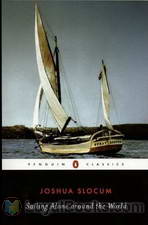 Sailing Alone Around the World
Sailing Alone Around the World
A sailing memoir written by seaman and adventurer Joshua Slocum, who was the first person to sail around the world alone, documents his epic solo circumnavigation. An international best-seller, the book became a great influence and inspiration to travelers from each corner of the globe. Additionally, Slocum is an example that through determination, courage and hard work any dream can easily become a reality. Written in a modern and conversational tone, the autobiographical account begins with Slocum’s description of his hometown of Nova Scotia and its maritime history... | |
By: Jules Verne (1828-1905) | |
|---|---|
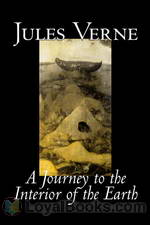 A Journey to the Interior of the Earth
A Journey to the Interior of the Earth
A historical manuscript penned by a medieval Norse poet. A mysterious code. Three intrepid explorers. A subterranean world filled with prehistoric creatures and proto-humans. These are some of the brilliant ideas that are superbly blended in A Journey to the Interior of the Earth by Jules Verne. Jules Verne, the French writer who created several works of science fiction, adventure stories and very popular novels, wrote A Journey to the Interior of the Earth in 1864. Some of his other books explore different aspects of geography, space and time travel... | |
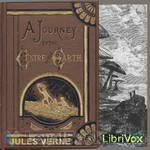 Journey to the Centre of the Earth
Journey to the Centre of the Earth
The story involves a German professor (Otto Lidenbrock in the original French, Professor Von Hardwigg in the most common English translation) who believes there are volcanic tubes going toward the center of the Earth. He, his nephew Axel (Harry), and their guide Hans encounter many adventures, including prehistoric animals and natural hazards, eventually coming to the surface again in southern Italy. | |
 Celebrated Travels and Travellers, vol. 1
Celebrated Travels and Travellers, vol. 1
The famous writer of great adventure stories Jules Verne wrote also several lesser known, but good non-fiction works. "Celebrated travels and travellers" tells the story of geographical discovery in the same well written and precise manner we are used to finding in Verne’s fiction books. This book is divided into 3 volumes. This is the first volume, named the "Exploration of the World" and it covers the period in the World's history of exploration from B.C. 505 to the close of the 17th century. The second and third volumes are respectively entitled "The great navigators of the 18th century" and "The great navigators of the 19th century".Coordinated by Kristine Bekere and Kajo. | |
By: Julia Darrow Cowles (1862-1919) | |
|---|---|
 Art of Story-Telling, with nearly half a hundred stories
Art of Story-Telling, with nearly half a hundred stories
In preparing this book the author has sought to awaken a keener perception and a higher appreciation of the artistic and ethical value of story-telling; to simplify some of its problems; to emphasize the true delight which the story-teller may share with her hearers; and to present fresh material which answers to the test of being good in substance as well as in literary form. - Summary by From the preface | |
By: K. Langloh Parker | |
|---|---|
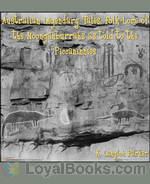 Australian Legendary Tales Folk-Lore of the Noongahburrahs As Told To The Piccaninnies
Australian Legendary Tales Folk-Lore of the Noongahburrahs As Told To The Piccaninnies
A Collection of Australian Aboriginal Legendary Folk-Lore Tales, legends of the Narran tribe, known among themselves as Noongahburrahs. | |
By: Katharine Elizabeth Dopp (1863-1944) | |
|---|---|
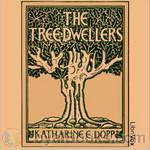 The Tree-Dwellers
The Tree-Dwellers
Katharine E. Dopp was well-known as a teacher and writer of children’s textbooks at the turn of the 20th Century. She was among the first educators to encourage the incorporation of physical and practical activity into the elementary school curriculum at a time when such activities were becoming less commonplace in a child’s home environment. The Tree-Dwellers – The Age of Fear is the first in a series of elementary school texts written by Ms. Dopp that focus on the anthropological development of early human groups... | |